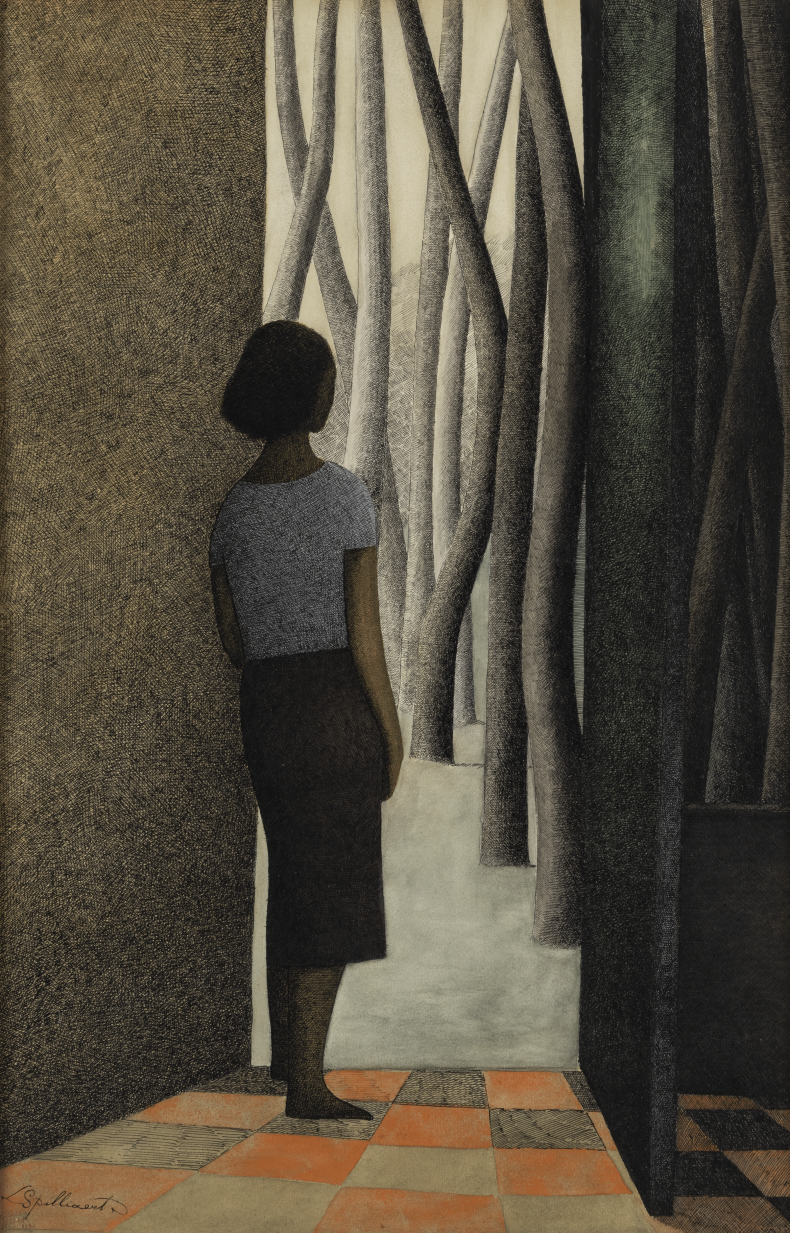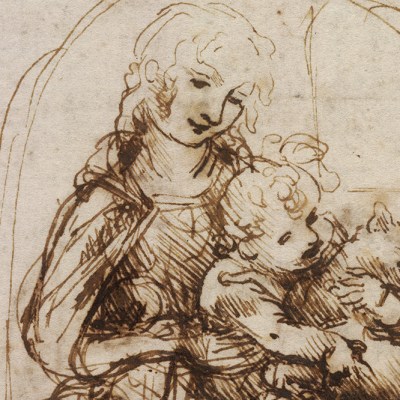From the March 2024 issue of Apollo. Preview and subscribe here.
‘All art is but dirtying the paper delicately,’ wrote John Ruskin in The Elements of Drawing (1857). This month, Salon du Dessin (SDD) returns to the Palais Brongniart in Paris with a selection of the most exquisitely sullied. As ever, the fair plays host to 39 exhibitors, the maximum number that can fit comfortably in its gilded hall. ‘If the fair is this size, as organisers you can make a selection that’s really focused on quality,’ says SDD’s president, Louis de Bayser of Galerie de Bayser.
This year, four new dealers have made the cut: Emanuel von Baeyer from London, Paolo Antonacci from Rome and François Delestre Fine Arts and Galerie 1900–2000 from Paris. The mix is characteristic: the organisers aim for a roughly 50/50 ratio of French and foreign exhibitors. Alongside these new faces will come, of course, an array of newly available artworks. ‘Something special about SDD is that dealers often bring their new acquisitions, so there are always surprises,’ de Bayser says. ‘It’s quite exciting: in one day, you have dozens of drawings come on to the market. It’s always interesting to see what your colleagues have been able to find during the past year.’
Travelling on the Nile (1988), Enrico d’Assia. Courtesy Paolo Antonacci; © the artist’s estate

He hopes one of Galerie de Bayser’s own offerings will cause a stir: a preparatory study for a figure in The Martyrdom of Saint Symphorien (1834) by Ingres, which hangs in Autun Cathedral. The study shows a man holding his arm in three different positions. ‘With Ingres, we generally imagine someone precise and cautious, whereas this drawing is very quick, instinctive and lively,’ de Bayser says. It’s this discovery of an intimate side of a familiar artist’s work that makes the study of sketches so rewarding.
SDD invites a museum, artist or foundation to be guest of honour at each edition. This year, the Dubuffet Foundation has the coveted spot. It is curating a small exhibition of Jean Dubuffet’s drawings – what de Bayser describes as ‘a little aperçu’ – covering the period from 1935 to 1985. In addition, the collector Katrin Bellinger, who focuses on images of artists at work (see Apollo June 2022), is exhibiting drawings on the theme of the fair’s annual symposium, which in both 2024 and 2025 will focus on ‘Travel Drawings’. ‘Katrin has many pictures of artists on the Grand Tour, sketching in the Italian landscape and so on,’ says de Bayser.
For those wishing to take a tour of their own, exhibitions and events for Drawing Week are taking place across the capital and beyond. Museums partnering with SDD during Drawing Week include the Petit Palais with the exhibition ‘Théodore Rousseau: The Voice of the Forest’ (5 March–7 July) and, further afield, ‘Claude Lorrain: Drawings and Etchings’ at the Château de Chantilly (2 March–19 May).
Salon du Dessin takes place from 20–25 March at the Palais Brongniart in Paris.
Bordure d’Été aux Artichauts (1979), Jean-Marie Toulgouat. Courtesy David Messum Fine Art Ltd.

Gallery highlights
Jean-Marie Toulgouat (1927–2006): Rediscovered Works
Messum’s, London
6 March–5 April
Monet’s great-grandson Jean-Marie Toulgouat grew up in the artist’s house at Giverny, alongside the famous gardens and his collection of Impressionist works. In later life he moved back to Giverny, where he painted floral works that owe as much to Hockney as to Monet. This exhibition coincides with ‘Jean-Marie Toulgouat: Gardening Giverny’ at the Garden Museum in London (13 March–24 April).
Takesada Matsutani
Hauser & Wirth Paris
6 April–19 May
In 1961 Takesada Matsutani developed a method of dripping paint mixed with wood glue on to canvases, creating abstract reliefs with biomorphic forms – an innovation that earned the Japanese artist membership of the Gutai group. Matsutani went on to use the technique throughout the next six decades, as can be seen in this career-spanning exhibition co-organised by Hauser & Wirth Paris and the dealer Olivier Renaud-Clement.
Léon Spilliaert: Wanderer through Silence
Patrick Derom Gallery, Brussels
Until 13 April
Twenty-one works on paper from the collection of Léon Spilliaert’s grandson offer an overview of the painter and printmaker’s work. Artworks range from his haunting depictions of the sea such as Seascape after Storm (1909) to dreamlike late works such as The Open Door, Waiting (c. 1945); many have not previously been shown in public.
Gauguin and the Contemporary Landscape
Ordovas, London
Until 26 April
A scene of rural Brittany painted by Gauguin in 1890, the year before his first voyage to Tahiti, forms the centrepiece of this show, which compares and contrasts work by the artist with landscapes created more than 100 years later. These include one of Peter Doig’s large-scale paintings of cabins from the 1990s and an equally large new work by Mamma Anderson.
The Door Open, Waiting (c. 1945), Léon Spilliaert. Photo: Vincent Everarts

Fair in focus
ARCOmadrid
Ifema, Madrid
6–10 March
A grand total of 207 galleries from 36 countries are travelling to the Ifema Madrid trade centre for the 43rd edition of ARCOmadrid. The largest number of exhibitors come from Spain itself, but Latin America is not far behind, comprising more than a third of the international galleries on show. Twelve of these are taking part in the section ‘Never the Same. Latin American Art’, curated by Manuela Moscoso and José Esparza Chong Cuy.
Other themed sections include ‘The shore, the tide, the current: an oceanic Caribbean’, curated by Carla Acevedo-Yates and Sara Hermann, which takes the interplay of land and sea as its subject. It features some 20 galleries and artists connected to the region, if you take ‘an expanded view, not limited exclusively to the physical territory’, as the organisers of the fair have it. Elsewhere, ‘Opening’ is devoted to 16 young galleries from around the world, including Artbeat from Tbilisi, Espacio Continuo from Bogotá, Sissi Club from Marseille and HOA Galeria from São Paulo, who return after winning the fair’s Opening Prize last year.
From the March 2024 issue of Apollo. Preview and subscribe here.



